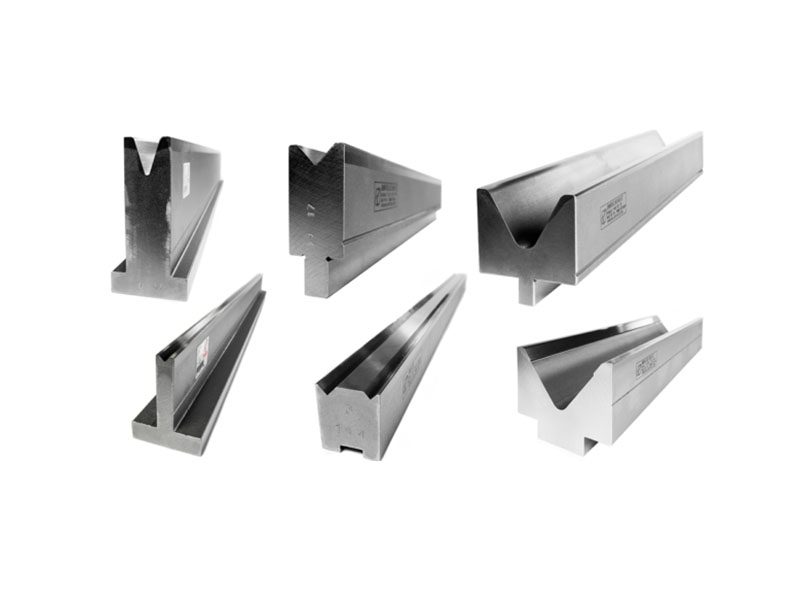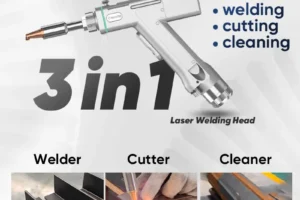There is not only one correct V opening for a certain material or thickness. There are ideal V openings for different thicknesses, but the correct one is only the correct one for our specific bending process. Here’s how it works.

It is very common for press brake operators to have their own personal “rule of thumb” when choosing the V opening for a certain job application. Although these rules may have developed over time from their personal experience, they do not take into account how commercial sheet metals actually behave and can sometimes lead to imperfect final pieces. For example, steel is an alloy of iron, carbon, and other minerals that are mixed together under heat. Because the proportions of each mineral can be different, the mechanical specifications of that steel can change. This means no steel is exactly the same and will not behave exactly the same when being fabricated. Commercial steels often have a standard composition, therefore we can only say that they will usually behave consistently.
MATERIAL & PRESSURE
Because steel is an alloy, there are some steels that have a higher resistance than others. In other words, some steels are stronger than others, and this must be accounted for when bending those steels. This resistance is called resistance to traction, and is it expressed as UTS (ultimate tensile strength), a specification we should all be aware of when purchasing from steel suppliers.
RADIUS OF PROFILES
One of the most critical aspects that is affected by the V opening is the radius of the bend. The larger the V opening, the larger the radius will be on the part. But the material’s resistance (or UTS) will affect the radius, too. The stronger the material, the larger the radius will be when using the same V opening. For thicknesses of mild steel up to ½ in, the radius (R) of a bend is normally 1/8 of the V opening, resulting in this formula:
R = V / 8
Which can be then adjusted for other materials such as:
R x 0.8 for aluminum (lower UTS)
R x 1.4 for stainless steel (higher UTS)
MINIMUM LEG (OR FLANGE)
Last, but not least, the easiest aspect to identify when selecting the correct V opening is the leg or flange length that the part requires. Don’t forget that we must have our sheet metal in direct contact with the die shoulders at all times during the bending process. If we fail to do this, the smaller-than-required leg will fall into the V opening and our bend will be imprecise. So the larger the V opening, the larger the minimum leg or flange we must have on a profile.
THE FORMULA
Keep in mind that when bending steel, no material is lost and no material is gained. When folding sheet metal, if the resulting radius is less than the thickness we are bending, then the extra material has to go somewhere. This is one of the most common causes of undesirable deformations. A radius that is smaller than the material’s thickness will cause the material to overboard on the sides of our bend, causing not only an aesthetical issue, but a decrease in strength of the part as well. On the other hand, a radius that is larger than the thickness of the material has no aesthetical issues. So when determining the correct V opening, the idea is to avoid radius deformations and still keep the radius as small as possible. From there we can determine:
R (radius) = V / 8 and R = T (thickness)
Therefore, the following equation can be used to determine the V opening:
V = T x 8
This equation works for thicknesses up to ½ in. When T is more than ½ in, the resulting radius becomes larger, therefore:
V = T x 10 for when thickness is more than ½ in
From there we should check if:
The minimum leg on the ideal V is enough for our project.
The pressure required does not exceed the press brake specifications.
CONCLUSION
As you can see, the simple selection of a die greatly affects our bending process. It affects the radius, the pressure required, the minimum leg and the looks of the entire part. Think about how a small V opening will leave more marks on the metal, and how these marks will be seen in many cases. In summary, how do we determine the correct V opening? By understanding that there is not only one correct V opening for a certain material or thickness. There are ideal V openings for different thicknesses, but the correct one is only the correct one for our specific bending process.
Learn more about our products, please visit and subscribe to our Youtube channel





